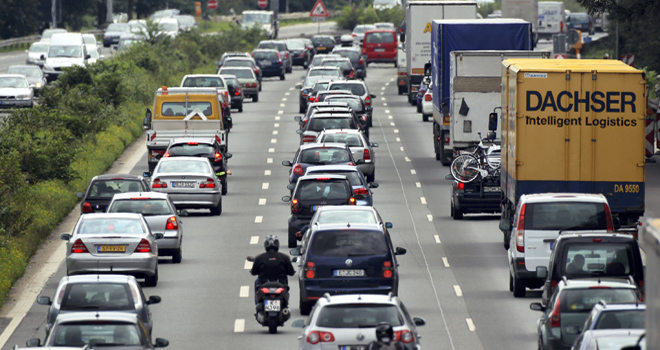By John Voelcker
How many vehicles are there on Earth?
We’d ask you to guess, except the headline above gives away the answer.
According to industry trade journal Ward’s, which added up both reported vehicle registrations and historical trends, the total crossed 1 billion sometime last year.
The vehicles include passenger cars, light-, medium-, and heavy-duty trucks, and buses, but not off-road or heavy construction vehicles.
The total at the end of 2009 was about 980 million, and with strong growth in emerging regions–particularly China, now by far the world’s biggest car market–the number powered past the 1-billion mark sometime last summer.
Most analysts feel the Chinese car market is on track to cross 20 million units per year within a few years, possibly reaching as high as 40 million per year by the end of the current decade. That would be three times the size of the U.S. market, in which virtually all sales are replacements for existing vehicles.
China still has far fewer vehicles per person than Western countries. With 1.3 billion of the world’s almost 7 billion residents, it now has 78 million vehicles, but an ownership rate of just 1 car per 17.2 people.
That leaves a lot of room for growth; if China were to equal the U.S. ownership rate, it would hold 1 billion cars all by itself.
Other growth markets include India and Brazil. In India, the ownership rate is just 1 car per 56.3 residents–a third that of China.
The U.S., by contrast, is a mature market with the highest rate of cars per person anywhere: 1 car for every 1.3 people, or three cars for every four U.S. residents. Its vehicle population of 240 million has stayed steady or fallen slightly since the start of the 2008 recession.
Italy is next, followed by a virtual tie among Japan, the U.K., and France.
Just 40 years ago, in 1970, the world total was only a quarter of a billion vehicles–a number that took 85 years to achieve.
The 1970 total doubled in just 16 years, to 500,000,000 by 1986. It took 24 more years to double again, to the current 1 billion.
By some projections, the world could house as many as 2.5 billion vehicles by 2050.
And how to mitigate the enormous environmental impact of such a large “car parc,” as it’s known among global planners, is … to say the least … a challenge.
This piece originally written by John Voelcker originally appeared in GreenCarReports.com, an editorial partner of Talking Points Memo.









